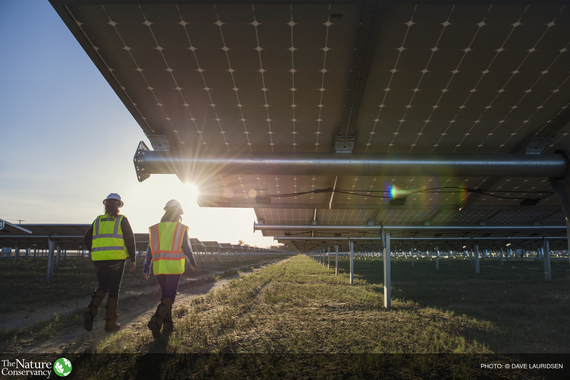Paris is again in the news -- and, this time, as host to nearly all the world's nations who came to a historic agreement to address climate change. I recall both the achievement of -- and tensions spawned by -- the Kyoto Protocol climate agreement nearly 20 years ago. The Paris Agreement marks a profound and different achievement. The words of poet Elizabeth Barrett Browning -- "let me count the ways" -- resound in my mind.
First is the remarkable inclusiveness. Before we even got to Paris, about 185 countries -- including developed and developing nations covering practically 100% of global emissions -- submitted their own national commitments to mitigate climate change. In Paris itself, all of those countries and more were represented and nearly 150 national leaders from all over the world made this happen - the most global leaders ever assembled outside the United Nation's New York headquarters. My colleague Peter Wheeler wrote last week about what he saw in the negotiations, highlighting his sense of a new kind of global empathy - a sense of unprecedented collective energy to protect our world for us today and for generations to come. This is the true significance of this Paris moment.
I peg this extraordinary inclusiveness to the pioneering process of engagement -- a process that is the very essence of national diversity and self-determination. Four years ago, in Durban, South Africa, the negotiating process towards Paris got started and participants established a "bottom-up" process, with each nation setting forth what it could do to reduce greenhouse gas emissions -- and address climate impacts.
The United States -- and other nations -- have long been wary of climate action propelled by globally set goals and requirements for participating countries. This time, nations set their own individual course, pivoting attention to what they could do, rather than what they object to doing.
Second is the tone of the agreement. It recognizes what thousands of companies, subnational governments, cities, and communities already know--building toward a low carbon, climate-resilient future presents enormous opportunity for innovation that will benefit societies, economies and ecosystems.
The private sector sees these opportunities. Thousands of major corporations have made declarations seeing the global climate negotiations as a platform to promote to investment in low-carbon energy. And a coalition of philanthropists led by Bill Gates committed billions of dollars to bring innovative technologies to market. A whole section of the agreement itself emphasizes that "accelerating, encouraging and enabling innovation is critical for an effective, long-term global response to climate change."
A third achievement is the agreement's combination of practicality and aspiration. It acknowledges differences among nations and focuses on existing national commitments--but holds forth both the need for and prospects of augmenting efforts over time with a goal of limiting global temperature increases to "well below 2° C above pre-industrial levels and pursue efforts to limit the temperature increase to 1.5° C." At The Nature Conservancy, we are encouraged by the overarching targets -- and by the national commitments to help fund actions to meet those targets.
We are also encouraged by references to "the importance of ensuring the integrity of all ecosystems, including oceans, and the protection of biodiversity." Recognition in the agreement of nature's solutions for both mitigation and adaptation is a fourth significant achievement in the Paris agreement.
Forests, the lungs of the planet, get special mention, with parties to the agreement encouraged to reduce emissions from deforestation and forest degradation. The role of forests -- and other ecosystems--in advancing climate solutions is, in fact, a key to cost-effective action. Investing in protection and restoration of tropical forests, grasslands and wetlands, combined with better land use practices, can naturally store more than 20 percent of annual carbon emissions. What's more, these natural climate solutions are uniquely valuable because they can also reduce risk to climate impacts and increase resilience, improve water and air quality, and promote sustainable food supplies.
Nature is perhaps our most flexible and multi-faceted climate solution. The Paris agreement paves the way for mobilizing nature's solutions by acknowledging land-use approaches to addressing climate change.
I have been watching, researching, and participating in climate dialogues, like so many colleagues in Paris, for over two decades. I have seen debates about costs, fairness, uneven national participation, the policy toolkit, and risks deflect attention away from cooperation and solutions. These debates will not now vanish. But the Paris agreement, with 195 countries participating, offers a global signal that the world has turned the corner towards a universal and comprehensive approach to climate change And the details of the agreement suggest that driving toward a low-carbon future lies within our grasp--and presents opportunities for both a cleaner future and a prosperous world.
Explore The Nature Conservancy's latest thinking, science and recommendations on climate, and energy.
